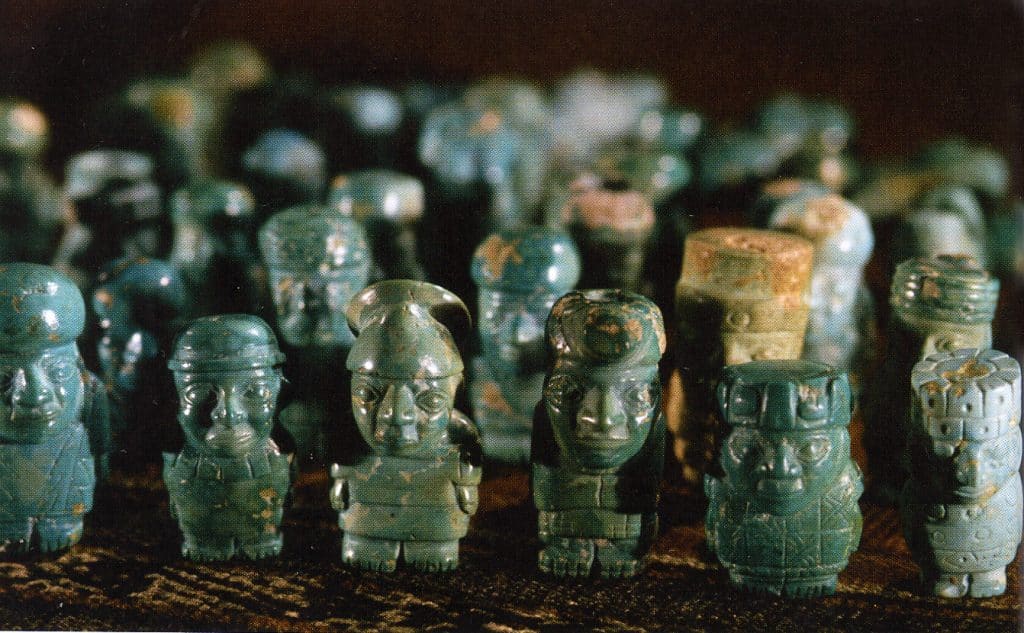Pre-Columbian civilizations across the Americas created some of the most enduring and enigmatic works of ancient art through their mastery of stone. From the great plazas of Tenochtitlan to the highland shrines of the Andes, stone was not only a construction material—it was a vessel of memory, power, and divine connection. Today, the study and preservation of Pre-Columbian stone artifacts offer profound insights into the spiritual, political, and artistic life of the ancient Americas.
The Spiritual Dimension of Stone
To the Indigenous peoples of Mesoamerica and South America, stone was not lifeless. It was animate—imbued with force, breath, and spirit. From jade to basalt, the stones selected for carving were often ritually significant. Certain stones were believed to house ancestral spirits or embody cosmic energies. The process of carving itself was a sacred act, transforming raw material into an object capable of mediating between the mortal world and divine realms.
This belief is evidenced in a range of sculptures—from Olmec votive axes shaped into supernatural beings, to Inca stone huacas used in pilgrimage networks. Such artifacts were not merely decorative but deeply integral to ceremony and cosmology.
Power and Iconography in Pre-Columbian Stone Sculpture
Among the most recognizable forms of Pre-Columbian stone sculpture are the monumental heads of the Olmec, the dynastic stelae of the Maya, and the geometric idols of the Chavín and Mezcala. These sculptures conveyed identity, legitimacy, and spiritual order. Often, they were installed in ritual spaces to witness offerings, celestial events, or transitions of power.
For example, Maya rulers commissioned intricately carved stelae to record calendar dates, political conquests, and divine lineage. In the Andes, stone representations of deities or ancestors were placed in huacas—sacred landscapes that merged geography with theology.
Collectors and historians today value these stone pieces not only for their artistry but for their capacity to narrate complex histories that would otherwise be lost.
The Diversity of Pre-Columbian Stone Carvings
The stylistic diversity across the Americas is immense. The soft abstraction of Guerrero stone figures stands in sharp contrast to the lifelike realism of Moche portrait heads. Zapotec urns exhibit expressive deities with codified symbolism, while Wari and Tiwanaku stones integrate architectural geometry into religious iconography.
Each culture’s carving tradition reflected its worldview. The use of symmetry, proportion, and axis alignment often encoded astronomical or theological principles. The distribution of Pre-Columbian stone carvings across tombs, temples, and civic structures indicates their centrality in both daily and sacred life.
These pieces, whether finely incised or roughly hewn, continue to inform archaeological understanding and aesthetic appreciation.
Collecting with Care and Context
The allure of Pre-Columbian stonework has naturally drawn interest from collectors, museums, and institutions. Yet, responsible stewardship is essential. Provenance research, ethical acquisition, and contextual documentation ensure that artifacts are preserved in ways that honor their origins.
Legitimate collections focus on transparency and educational value. When properly contextualized, these works can foster respect for Indigenous ingenuity and resilience rather than reduce them to mere objects of commerce.
A Timeless Dialogue in Stone
What makes Pre-Columbian stone objects especially compelling is their timelessness. Though created centuries ago, they speak clearly today—through iconography, craftsmanship, and embedded meaning. In the enduring weight of these carvings, one hears the echo of ritual chants, the murmur of courtly intrigue, and the silence of sacred mountain altars.
Whether one encounters a carved stela, a ceremonial axe, or a weathered effigy figure, these stones ask us to listen. They are reminders that the civilizations of ancient America did not vanish, but were resilient, leaving messages in the most durable language known: the language of stone.
